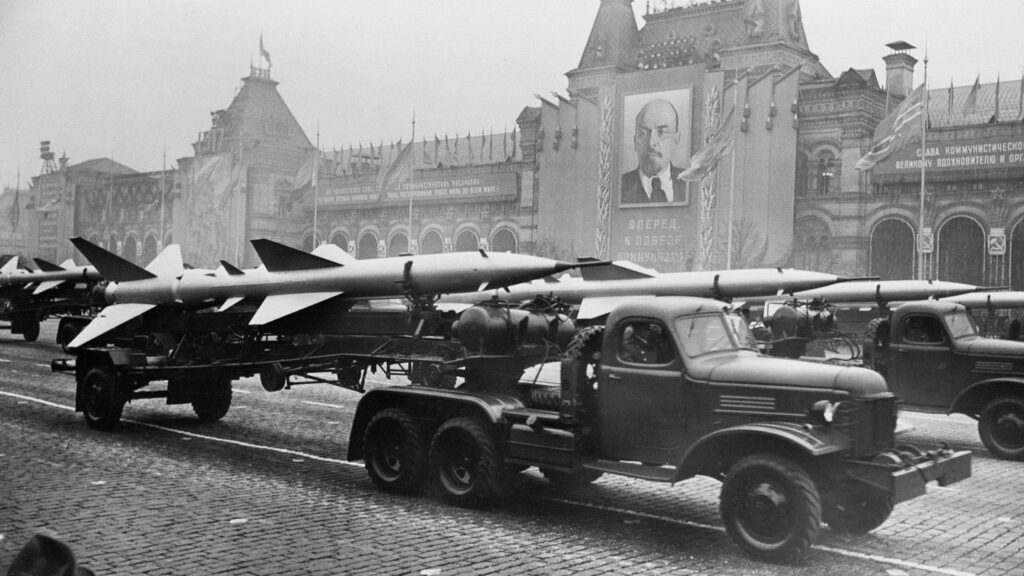In the modern era, countries are engaged in a relentless race for superior military technology. This arms race is driven by the desire to secure national interests, deter adversaries, and maintain military superiority. Technology plays a crucial role in modern warfare, revolutionizing military operations and enhancing defense capabilities. The 21st-century arms race has intensified, with major powers investing heavily in research and development. Competition in developing hypersonic weapons and AI technologies is fierce. The implications of this arms race are significant, potentially escalating conflicts and destabilizing international security. Policymakers and the international community must address these challenges to promote arms control and prevent the proliferation of advanced military technologies.
A New Arms Race: The Race for Superior Military Technology
In the modern era, countries around the world continue to engage in a relentless race for superior military technology. This arms race is driven by the desire to have the most advanced and powerful military capabilities in order to secure national interests, deter potential adversaries, and maintain strategic military superiority. This new arms race is characterized by competition in developing cutting-edge weapons systems, innovative defense technologies, and advanced military capabilities.
The Role of Technology in Modern Warfare
Technology plays a crucial role in modern warfare, as it has the power to revolutionize military operations and significantly enhance a country’s defense capabilities. Advances in technology have led to the development of sophisticated weapons systems such as drones, cyber weapons, missile defense systems, and unmanned combat vehicles. These advanced technologies have the potential to change the nature of warfare and provide a significant advantage to countries that possess them.
The 21st Century Arms Race
In the 21st century, the race for superior military technology has intensified, as countries invest heavily in research and development to stay ahead of their rivals. Major powers such as the United States, China, Russia, and European countries are leading the way in developing advanced military technologies, while smaller nations are also investing in building up their military capabilities.
One of the key areas of competition in the modern arms race is in the development of hypersonic weapons. Hypersonic missiles are capable of traveling at speeds greater than Mach 5, making them extremely difficult to defend against and giving countries the ability to strike targets with unprecedented speed and precision. The race to develop hypersonic weapons has led to significant investments in research and development by major military powers.
Another area of intense competition in the modern arms race is in the development of artificial intelligence (AI) and autonomous weapons systems. Countries are investing in AI technologies to enhance military decision-making, improve combat effectiveness, and develop autonomous weapons systems that can operate without human intervention. The development of AI in military technology has raised concerns about the potential for autonomous weapons to make decisions about targeting and engagement without human oversight.
The Implications of the Arms Race
The ongoing arms race for superior military technology has significant implications for international security and stability. The proliferation of advanced weapons systems and technologies has the potential to escalate conflicts, increase the risk of miscalculation, and lead to arms races in other regions of the world. The development of highly advanced military capabilities also raises concerns about the potential for these technologies to fall into the hands of rogue states or non-state actors, posing a threat to global security.
Furthermore, the race for superior military technology has the potential to destabilize strategic balance and trigger arms races between rival countries, leading to an escalation of tensions and increasing the risk of conflict. The development of advanced weapons systems also raises ethical and legal questions about the use of autonomous weapons and the implications of AI in military operations.
Conclusion
In conclusion, the race for superior military technology is a defining feature of the modern era, as countries continue to invest in developing advanced weapons systems and defense technologies in order to maintain military superiority. The implications of this arms race are significant, as it has the potential to shape the future of warfare, escalate conflicts, and threaten international security. It is essential for policymakers, military leaders, and the international community to address the challenges posed by the arms race and work towards promoting arms control and disarmament measures to prevent the proliferation of advanced military technologies.
